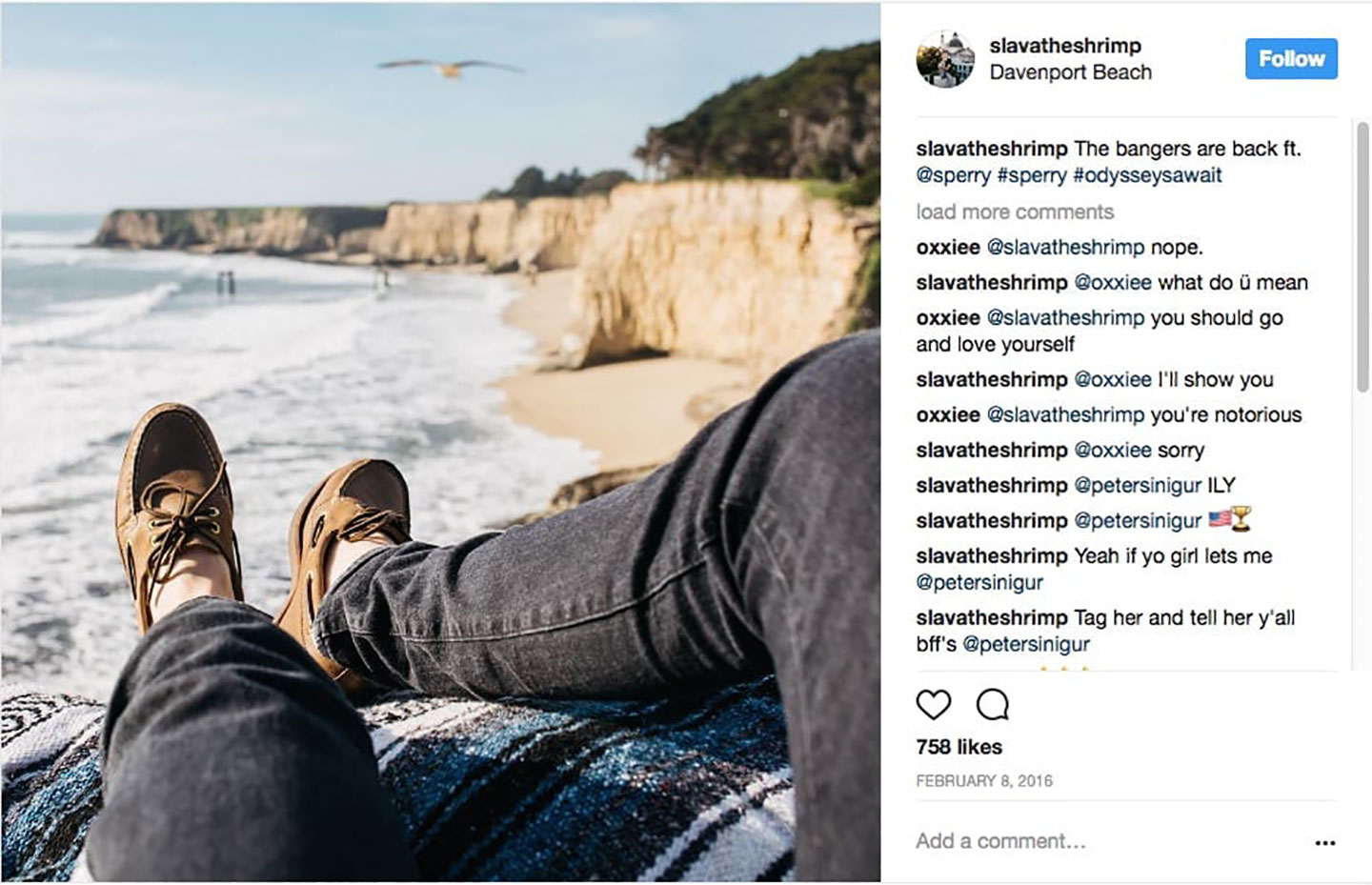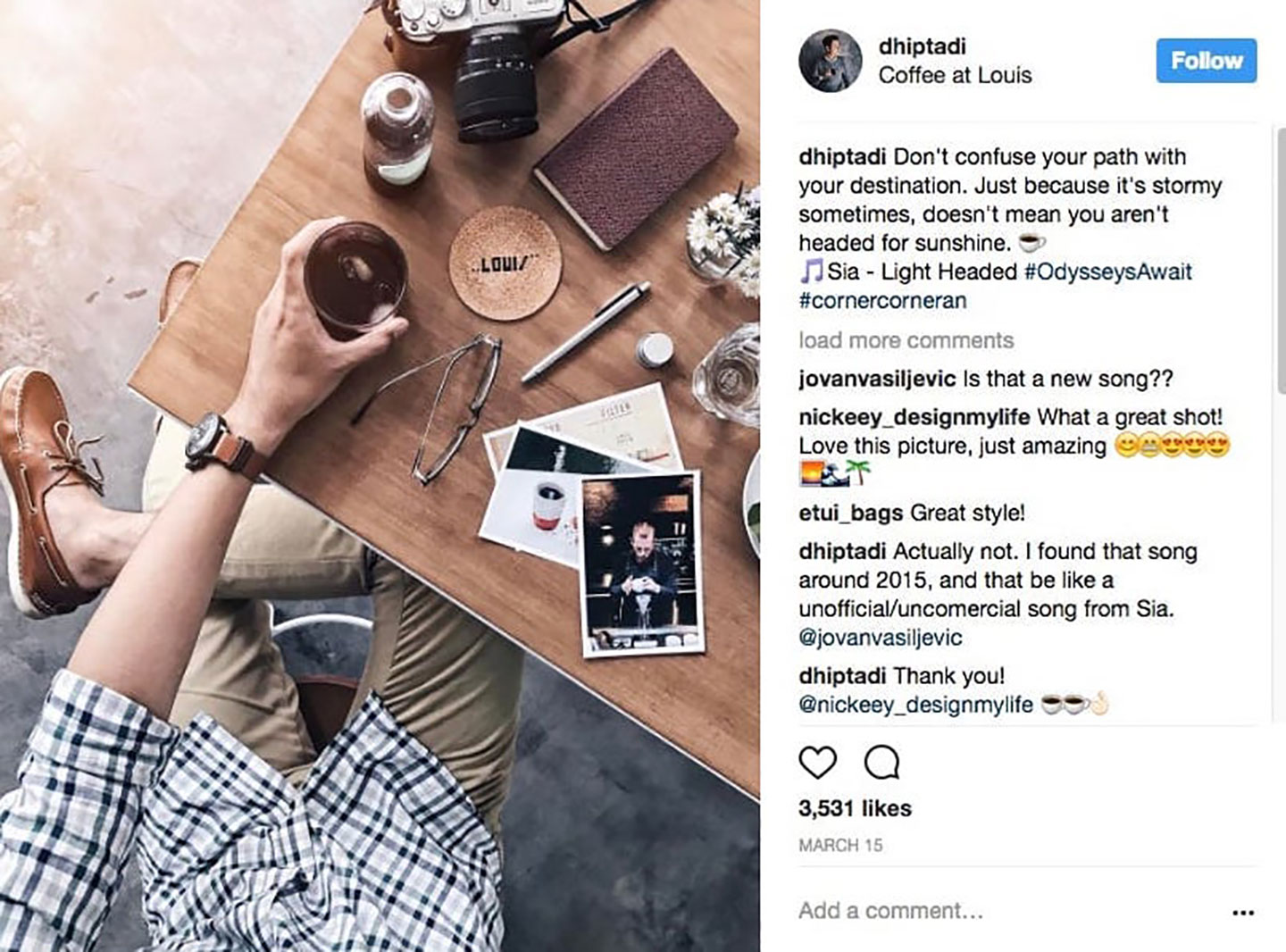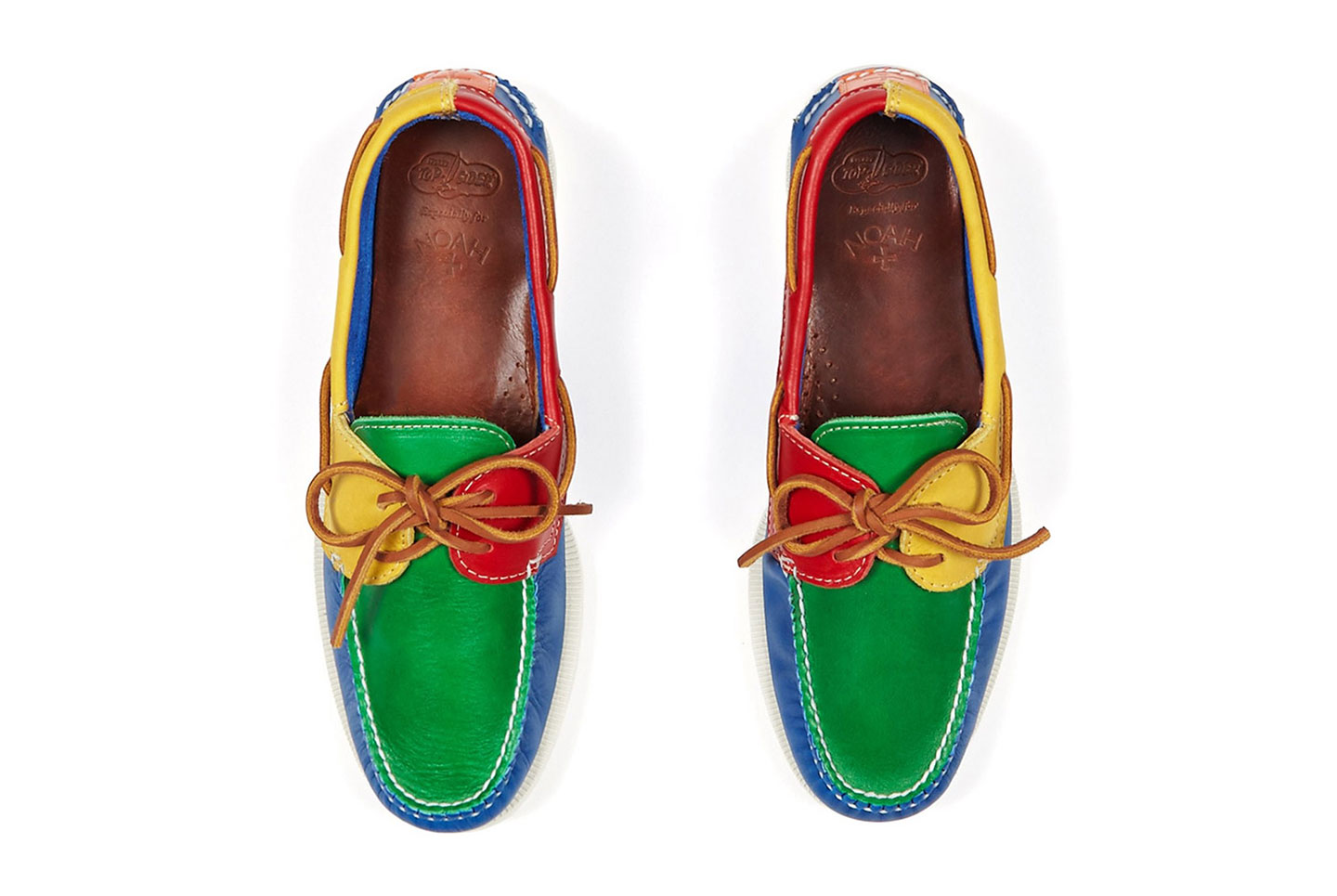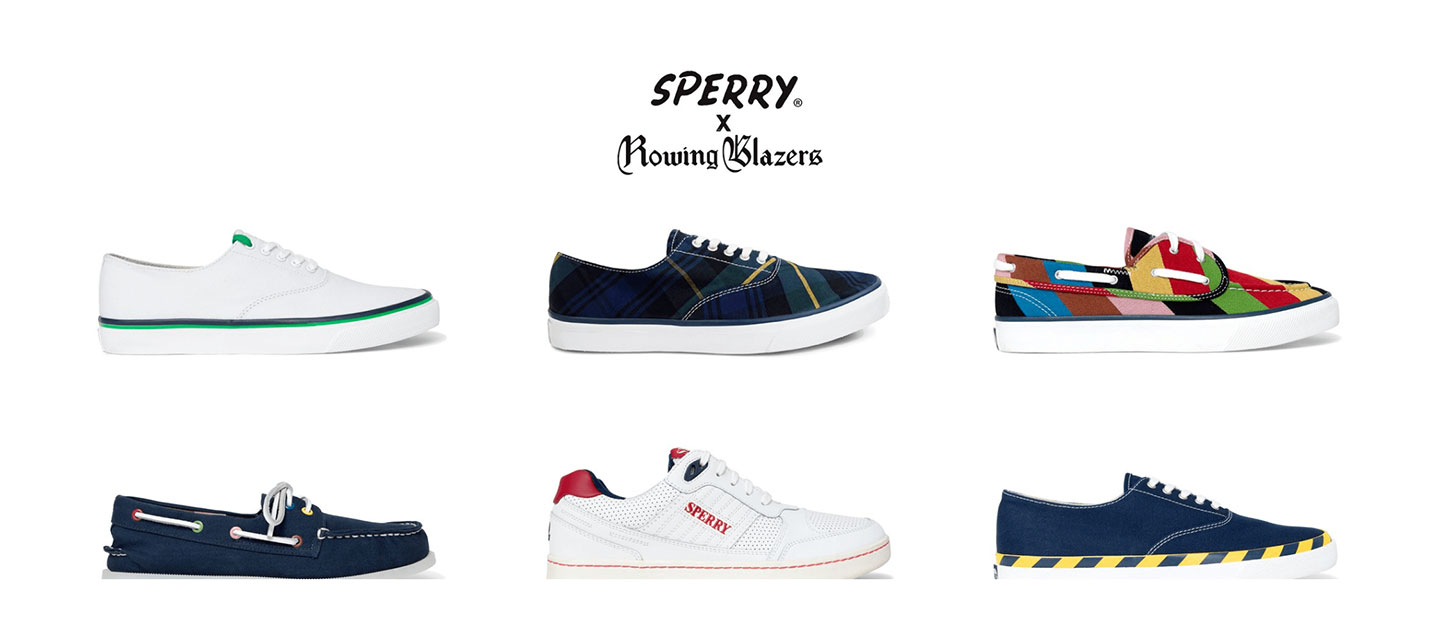MANILA, PHILIPPINES — In a previous blog on Red Bull® x GoPro®, Branding Nerd talked about the concepts of ‘co-marketing’ and ‘co-branding’. Readers learned how the synergy of two brands that share a common target market can help build equity for each partner, thereby providing a lift in their value and market share.
In this blog, they will revisit the concept of ‘co-branding’ and ‘influencer marketing’, and how the combination of these two marketing concepts brought new life to a footwear brand that went out of style but has recently recaptured the imagination of today’s youth.
“Youth is a quality, not a matter of circumstances.”
SponsorFrank lloyd Wright, American architect and designer, 1867-1952
I am referring to the iconic boat shoe brand Sperry Top-Siders®, which is now known as just Sperry®.

Founded in 1935 by American inventor and sailor Paul A. Sperry after he slipped on the deck of his boat and fell overboard, the brand was borne out of a need for boat shoes which were non-slip.
“Determined to create a non-slip shoe, Sperry takes inspiration from the natural texture of his cocker spaniel Prince’s footpads, which never seemed to slip, even on ice. He cuts grooved patterns in a natural rubber sole, and glues the hand-cut rubber to the base of an old pair of canvas sneakers, and the world’s first non-slip deck sneaker was invented.” – Sperry Website
Before World War II, in 1939, the United States War Department specified Sperry Top-Sider® as one of the official shoes of the Navy and negotiated the right to manufacture the shoes for its sailors. It became the official footwear of the casual uniform of the United Sates Naval Academy. In 1940, Sperry sold his business to the United States Rubber Company, which successfully marketed the shoe across the United States. Through the decades, the brand went through several ownership changes. In 1979 children’s footwear company Stride Rite Corporation acquired the brand. Then in 2007, it became part of Payless ShoeSource. Then eventually in 2012, current owner Wolverine World Wide bought the brand in a US$1.23billion multi-brand acquisition from Collective Brands Performance and Lifestyle Group which included Sperry Top-Sider®, Keds®, Saucony®, and Stride-Rite®. With the acquisition, the company further cemented its leadership in the footwear market with its stable of boot and shoe brands which included well-known names like Wolverine®, Sebago®, Merrel®, Hush Puppies® and more.
The ‘Preppy’ Look

Back during my high school years in the mid-1980’s, a pair of Sperry Top-Siders® was a must-have if one was going for that ‘preppy’ look. But just like all things fashion, it eventually went out of style towards the turn of the century.
However, just like all things fashion also, this iconic boat shoe brand is making a strong comeback in recent years with the help of its new global owner, product segmentation, product styles collaborations thru co-branding, and a savvy social media campaign which is recognized as one of the most successful uses of influencer marketing, more specifically ‘micro-influencers’, in recent years.
Before we go further into Sperry®, let’s understand influencer marketing.
Influencer Marketing
‘Influencer marketing’ falls under the ‘promo strategy’ pillar, or the ‘fourth P’ of the marketing mix section of the overall brand architecture. And if used properly, it can effectively build brand equity and deliver increased revenues for the company. According to Statista, the influencer marketing global market is expected to grow in value from US$9.7billion in 2020 to around US$13.8billion this 2021.
What is ‘Influencer Marketing’?
In very simple terms, it is a promotional strategy that uses the influence of a person to elevate the trust level of a brand amongst its target customers with the goal of increasing its sales and share of the market.
In other words, if someone I trust says a brand is good, then that brand must really be good. It’s not because the brand says so, but because the person of influence whom I trust says so.
These influencers are also referred to as KOLs or Key Opinion Leaders.
This concept is not new. For hundreds of years, brands have used people of influence, whether they are members of the royal family, celebrities, or other public personalities, in order to help generate awareness for a brand so that it can sell more of its products or services.
Influencer Marketing is also very closely related to ‘Celebrity Endorsers’ which specifically refers to individuals who are celebrities in their respective fields (i.e. movies, music, television, sports, etc.). We also covered this concept of ‘celebrity endorsement’ in a previous blog on Bench®. These celebrities are also referred to as ‘Macro or Mega Influencers’, i.e. well-known individuals who have a minimum of half a million followers. Once again, the concept of celebrity endorsers and macro and mega influencers are not new.
A concept that is considered relatively new is the concept of ‘micro influencers’, which developed only during the past four to five years.
According to social media influencer marketing agency Mediakix, there are five tiers of Instagram Influencers, are follows:

The Power of Micro-Influencers
According to Mediakix: “Micro-influencers surged in popularity during 2017 as more brands adopted an influencer marketing strategy. Search interest in the term ‘micro-influencer’ peaked again in early 2019, jumping more than 500% since 2018.”
While macro and mega influencers have definitely served brands very well for many decades, the rise of micro-influencers in recent years is attributable to several factors.
Leading Instagram Analytics Tool brand Social Fox provides ten such factors, namely:
- Lower Costs. It is a well-known fact that macro and mega influencers can break the bank for many brands, some even costing millions of dollars. Therefore, micro-influencers provide good alternatives for brand to achieve more targeted and cost-efficient influencer marketing campaigns.
- Targeted Audiences. Micro-influencers, by nature, are niche personalities. For brands who are looking to create new customer segments for itself would find that these types of micro-influencers deliver a better return on investment.
- Higher Engagement. Because micro-influencers have a smaller audience, they have the ability to engage with their audience more frequently and more meaningfully. This builds up the trust level between the micro-influencer and his or her audience which is a valuable currency that brands can leverage on with the right influencer partners.
- Easier to Work With. Micro-influencers are usually not widely-known celebrities, therefore they don’t have the usual trappings associated with celebrities which increase the complexity of working with such mega-influencers.
- Quality Content. Micro-influencers, especially those on Instagram, usually gain a following because of their carefully curated and high-quality visual content on their accounts. Therefore, brands who partner with these individuals are assured of content that will not compromise their identity as brands.
- More Authenticity. These types of influencers are everyday individuals who are seen as honest and trustworthy. Therefore, if they are given the freedom to genuinely enjoy the brand in their natural environment, the authenticity quotient of the brand increases significantly.
- Room for Experimentation. Because of the relatively low investment associated with these types of influencers, brands are provided much elbow room to try new ideas in partnership with these influencers.
- Enthusiasm for the Brand. These types of influencers may actually be followers of the brand already. Therefore, enthusiasm for the brand is real and palpable. This positive energy can be channeled by the brand through a collaborative and long-term partnership with the influencer.
- Stronger Partnerships. The key to a successful influencer marketing campaign is longevity. And the beauty of having partnerships with micro-influencers is that it be can be nurtured over time through a number of creative joint efforts between the brand and the individual.
- Increased Visibility Online. Social Fox makes a very good point about visibility: “Micro-influencers help diffuse a brand’s presence throughout the digital ecosystem. Instead of attempting to stand out, it’s better to blend in naturally. You will gain more visibility through integration. Consumers prefer this method because it doesn’t feel like the marketing is being forced upon them.”
Relaunch of the Brand: “Odysses Await”
After being absorbed by its new owner Wolverine World Wide back in 2012, Sperry® underwent a brand renewal starting in 2015 aimed at regaining its popularity especially with the younger market segments.

“That truncation (of the brand name from Sperry Top-Siders® to just Sperry®) is just one part of the ambitious rebranding strategy, which aims to inject a youthful energy into a heritage label that had plateaued,” said Ric “That truncation (of the brand name from Sperry Top-Siders® to just Sperry®) is just one part of the ambitious rebranding strategy, which aims to inject a youthful energy into a heritage label that had plateaued,” said Rick Blackshaw in an interview with Footwear News back in 2015. He was the executive who previously headed Wolverine’s Keds® brand and moved over in 2014 to serve as president of Sperry®. “Consumer trends shifted, and the brand needed to take stock. The (boat-shoe) category was so hot for so long, and then it fell off,” he said. “It happens. It’s a matter of regathering your wits and figuring out what story you want to tell.”
And the ‘new story’ that Blackshaw and his team wanted to tell revolved around an energetic marketing campaign that carried the tagline “Odysseys Await” and was aimed at a more youthful global customer, which Sperry® has dubbed the “intrepid (or adventurous) consumer.”
With respect to its social media marketing strategy, Sperry® launched a micro-influencer campaign back in the latter part of 2016 which enlisted around one hundred micro-influencers whom the brand discovered amongst its own Instagram followers who were already sharing photos of their footwear and of course using the hashtag #OdyssesAwait.
The brand identified these one hundred micro-influencers who were creating high-quality content with their products and invited them to develop photos for Sperry®’s official account. Sperry® did not compensate these influencers financially. Instead, they offered them exposure to their hundreds of thousands of Instagram followers plus a chance to win new shoes.
When Slava Daniliuk (@slavatheshrimp) started sharing posts with Sperry®’s campaign hashtag #OdysseysAwait, the brand reposted some of his images and tagged his account. For someone with less than 5,000 followers, the heightened exposure for him was certainly well worth the use of his photo.


Sperry® also posted Dhipta Adi Pamungkas’ (@Dhiptadi) photo on its IG account. In exchange for exposure and recognition, these micro-influencers provide Sperry® with quality and authentic imagery. Many of the photos in Sperry®’s feed belong to micro-influencers.

Sperry also posted this post from Whitney Shelhamar (@whitneyshelhamer) with the caption: “Boats come in all shapes and sizes – and boat shoes do too.”

The key lesson from Sperry® is that there are times when the best micro-influencers are those who are already talking about your brand. What brand wouldn’t want to capitalize on a loyal customer and turn them into a micro-influencer?
The success of this campaign lies in the amount of engagement created at a low, or even close to zero cost. Sperry® says it’s “Not all about ROI. We are constantly ensuring that we are (engaging) people.” User-Generated Content (or UGC) is significantly more powerful than branded posts, and Sperry® has tapped into an abundant and authentic source.
Their creativity did not stop there.
Co-Branding
Part of the relaunch strategy was the introduction of new products through co-branded design collaborations with the likes of hip and socially-oriented fashion brand Noah® in 2018, and subsequently in 2019 with American classics clothing brand Rowing Blazers® which was founded by three-time US National Rowing Team member Jack Carlson, a nod to the nautical heritage of Sperry®.



What has been the result for Sperry® after its relaunch?
As reported in Footwear News in August 2018: “We had a strong second quarter highlighted by solid revenue performance, especially from Merrell® and Sperry®, along with earnings that significantly surpassed expectations” said Wolverine World Wide Chairman, President and CEO Blake Krueger. “Our underlying revenue growth during the quarter was the highest since the second quarter of 2015, and reflects early progress against our Global Growth Agenda.”
In its pre-pandemic 2019 Annual Report, Wolvervine World Wide reported that “Sperry® improved to mid-single digit growth during 2019, with continued strength in the boot and casual categories. The brand saw impressive growth in its direct-to-consumer business with new retail store locations leading to growth of nearly 25% and growth in eCommerce of 20%.”
Clearly, the combination of its micro-influencer campaign and co-branding partnerships, as part of the overall brand re-launch, have earned positive dividends for Sperry®.
Of course, the combination of these two marketing concepts as part of the relaunch were not the only success factors for the brand’s resurgence.
However, just like any brilliant brand that is able to sustain itself for the long-term, Sperry® has employed creativity and imagination in various pillars of its marketing mix (in Sperry®’s case, ‘promo strategy’ and ‘promo strategy’), that has refreshed and updated the brand while remaining consistent with its brand mission statement which is ‘To ignite the human spirit through sea-based adventure”, hence #OdyssesAwait.










